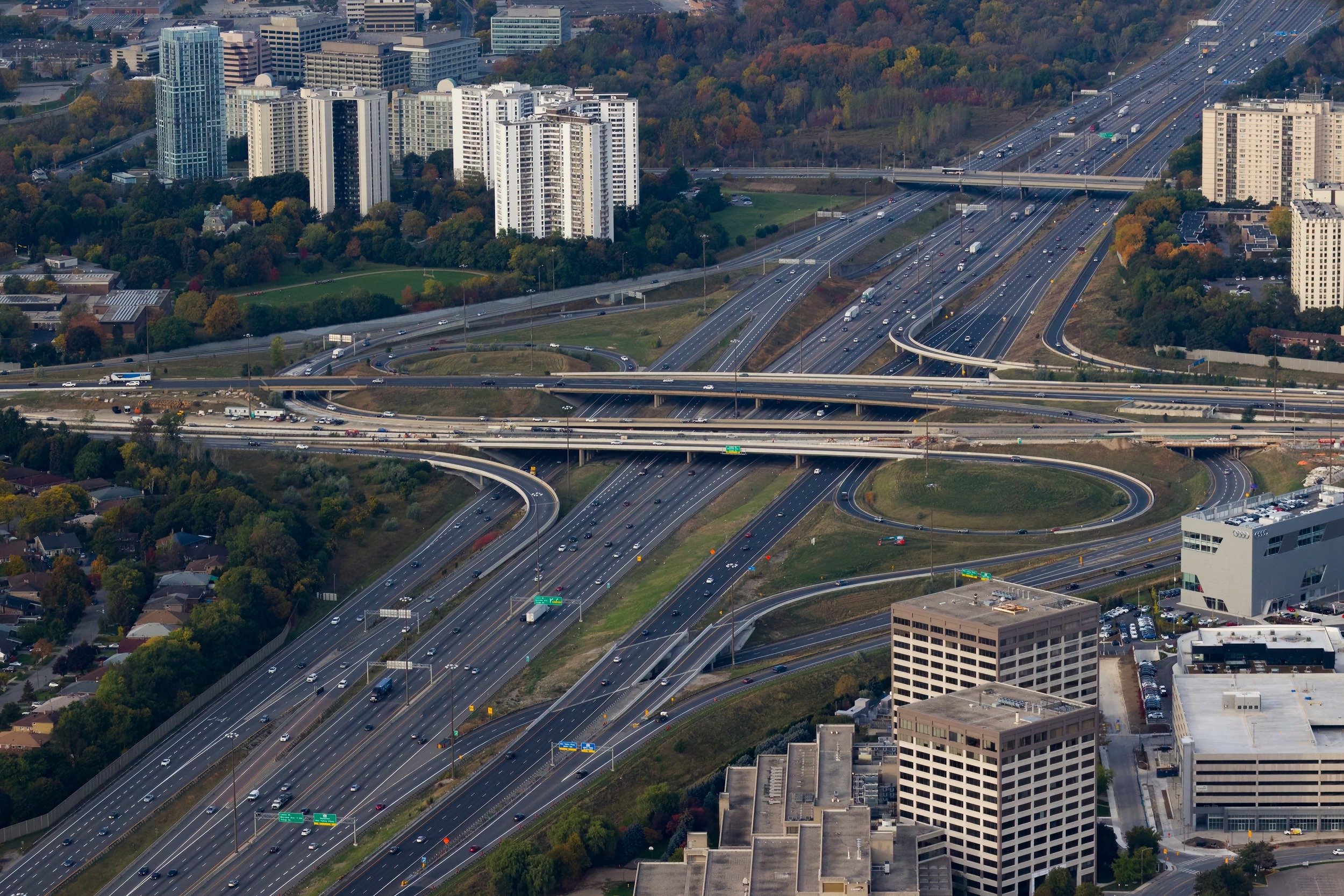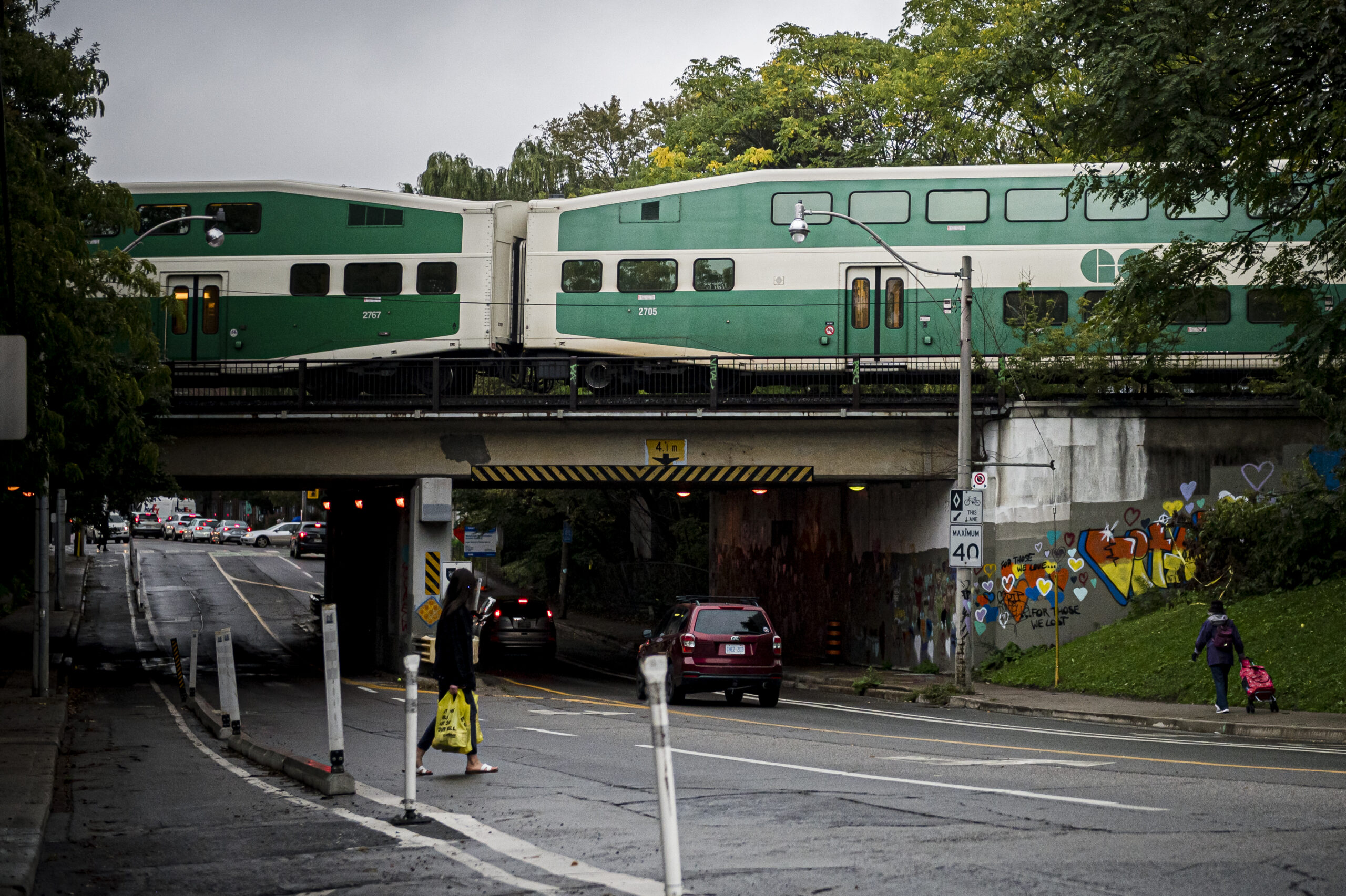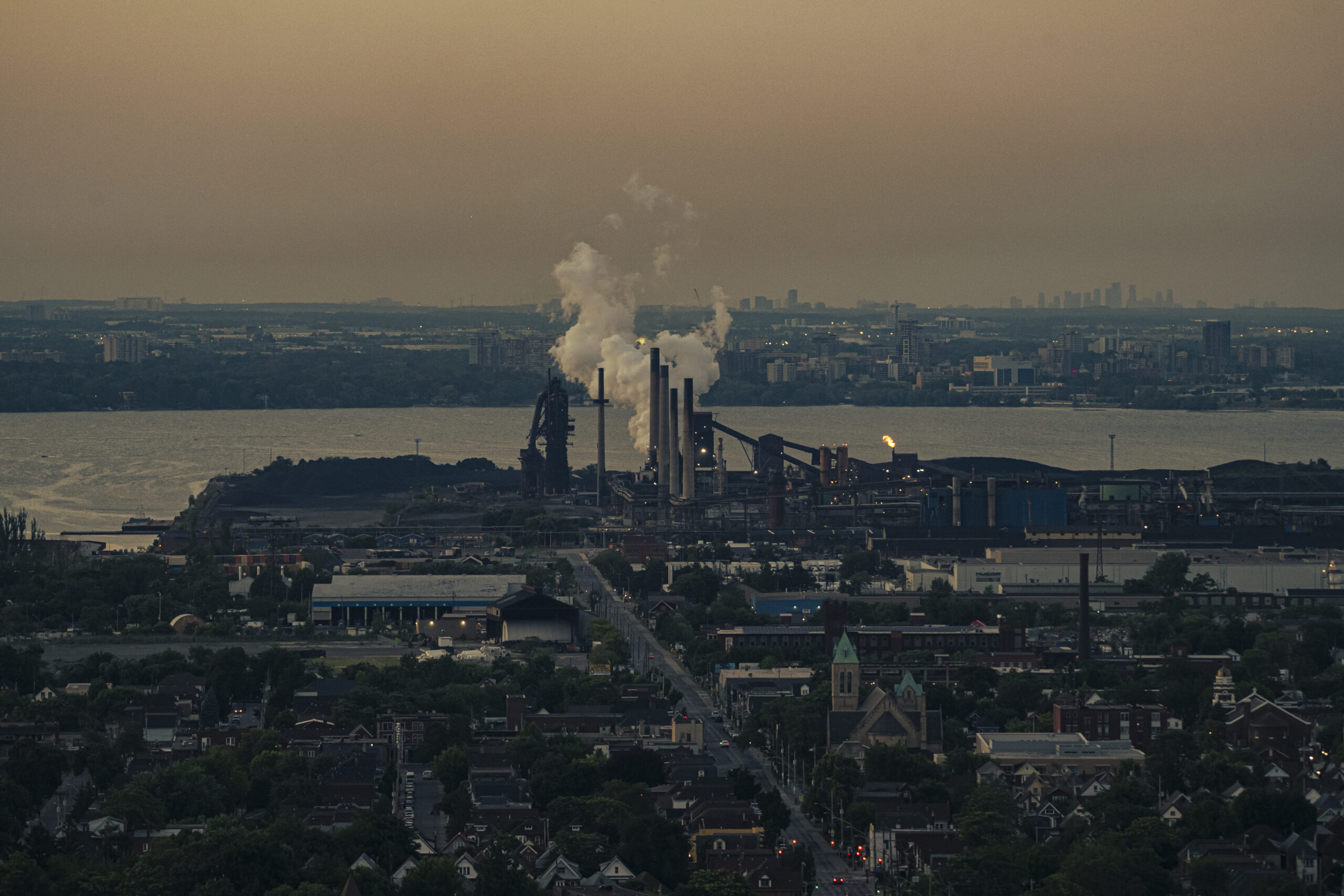
Two blank cheques: are Ontario and B.C. copying the homework?
Governments of the two provinces have eerily similar plans to give themselves new powers to...
Get the inside scoop on The Narwhal’s environment and climate reporting by signing up for our free newsletter.
The leaders of Ontario’s major political parties went head-to-head in two provincial election debates bookending the Family Day weekend — and in both, they rarely touched on the environment.
During a total of three hours of back and forth on stage, the environment took up some 20 minutes. That’s a bit higher than our tally during the last provincial election in 2022, but not by much.
Most of the discussion this time around came in the form of quips instead of in-depth policy. At the Feb. 14 debate, focused on northern issues, the leaders took turns alluding to the mining and forestry industries. And during the Feb. 17 debate, the opposition sniped at Progressive Conservative Party Leader Doug Ford about his government’s Greenbelt scandal.
“I think I was pretty clear,” he said in response, referencing his plan to allow housing development on the Greenbelt, which he reversed in 2023 amid public backlash. “I said I was and then I wasn’t and then I went ahead and did it. But in saying that, I apologized to the people.”
There were silly moments too, especially during the first debate, with Ford saying Ontario Green Party Leader Mike Schreiner “won’t cut down a dandelion to put a shovel in the ground” and Ontario Liberal Party Leader Bonnie Crombie inviting Ford to go kayaking.
Neither the impact of the Ford government’s environmental policy — or lack thereof — nor the opposing parties’ positions on what they’d do differently were a significant focus of the questions the leaders were asked. But clean water, productive farmland, extreme weather and other environmental issues have massive implications for other sectors that are, perhaps, more top of mind to Ontarians.
At one point, Ford pitted environmental interests against economic ones, a false choice that ignores the threat climate change poses to our economy. “You believe in bike lanes and riding bikes and planting trees, I get it. But the problem is, you won’t be able to afford the trees because the economy will go down the tubes with all three of you,” he said. (In his first term, Ford cut the 50 Million Tree program that subsidized the cost of planting trees in developed areas.)
The province continues to grapple with yet another extreme weather event, this time a record-breaking snowfall scientists say is due to increasingly warm, ice-free Great Lakes (caused by climate change, which is caused by burning fossil fuels). Floods, heat waves and other extreme weather are already straining Ontario’s roads and buildings, and will create additional loads for an already-overloaded health care system. The province is also trying to avoid an energy crisis as demand drastically exceeds supply and to balance the need for more housing and industry with farmland and green space.
Of the scant few statements on environmental issues at the Ontario leaders’ debates, not all were exactly true — or at least not how they were presented.
So here’s a look at how the environment factored in, and why it might be worth further discussion.

On the debate stage Monday night, the leaders clashed over one of Ford’s biggest pre-election promises: to build a tunnelled expressway underneath Highway 401 to connect the Toronto suburbs of Brampton and Mississauga. Ford’s Progressive Conservatives have said they’ll soon go ahead with a feasibility study for the plan, which they’ve claimed — without evidence — would help cut down on the region’s notoriously awful traffic jams.
In his statements, Ford did rely on real facts about the Greater Toronto Area’s highway woes, but he also came to incorrect conclusions about what would fix it. “The folks on the stage here, they don’t believe in building highways, they’re against the tunnel,” he said. “So, I guess my question to all three of them is, where’s the traffic going to go?”
While it’s true that roads around Toronto are expected to be chock-full of gridlock in coming decades, building more highway capacity isn’t likely to help. Decades of evidence and studies have shown that although adding new lanes does seem to make things better at first, they also attract more drivers and worsen traffic in the long run. The concept is called induced demand, and it makes it really difficult to deal with traffic congestion.
It’s the same reason why removing tolls from some portion of the nearby Highway 407 — a plan touted in various forms by all of Ontario’s major parties during this election, especially Ontario’s NDP — or the Tories’ plan to build Highway 413 likely won’t work either. The Greens are the only party to acknowledge that reality so far, saying long-term fixes to reduce car dependency would also be needed to make a dent in traffic.
Ontario Liberal Leader Bonnie Crombie took aim at the tunnel plan at Monday’s debate, calling it “dumb” and a “fantasy.”
“It won’t be built in my lifetime, it won’t alleviate any congestion, it will bankrupt the province,” Crombie said. While tunnel projects often do take a long time and incur massive costs, there isn’t much public information about the project’s actual timeline or price tag. Crombie also claimed the project would cost $150 billion, which is much higher than what experts have suggested — a more reasonable guess would be tens of billions of dollars. Which is still a lot, especially if the end result isn’t less traffic.
So what would work? Traffic experts tend to agree that congestion pricing or tolls, as New York recently implemented, are the most likely solution to reduce gridlock.


The parties haven’t brought up that idea on the campaign trail, but they have pitched increased investments in public transit as a way to get cars off the road. More transit is sorely needed: it helps more people move around, can make cities more liveable and is good for lowering carbon emissions and other types of pollution. But it’s worth noting studies have also shown that public transportation often doesn’t help clear the roads, either — even if some people start commuting by train instead of car, for example, more cars just fill the empty space.
In the lead-up to the election, the Ford government directed Metrolinx to study how to free up tracks for passenger train use only, and not freight trains. In the debates, Ford boasted about investments in the Ontario Line even as construction cost estimates have increased by 43 per cent on the light rail project running from Exhibition Place near Toronto’s lakeshore to the city’s northeast.
Crombie also promised to invest in transit, including all-day GO service on suburban lines to Toronto. “We need to invest more into our public transit systems,” she said. “We’re talking about $150-billion fantasy tunnels, rather than utilizing existing resources.” And that’s a fact: the Milton line west of Toronto, for example, only runs on weekdays during rush hour.

Ontario party leaders had only 30 seconds each to share how they would reduce carbon emissions at the Family Day debate, so solutions were sparse despite being needed, well, yesterday.
To help meet the federal government’s commitments in the Paris climate agreement, Ontario committed to reducing its emissions by 30 per cent from 2005 levels by 2030. Ford boasted without evidence that Ontario has the “greatest reduction of emissions anywhere.” In fact, the province’s emissions increased by 5.7 per cent in 2024, taking it further from the target.
Ford also touted Ontario’s clean grid, stating, “We’re at 90 per cent clean energy.” This figure has actually dropped to 87 per cent today after his government boosted natural gas-generated electricity to make up for a shortfall in nuclear energy and meet the rise in demand for power. To Schreiner’s credit, the Ontario Greens leader did suggest at Monday’s debate that we should stop ramping up natural gas plants — as have the top scientists around the globe, who urge a retreat from fossil fuels.
Ford also boasted about making investments that would enable Ontario’s steel industry to transition from coal to electric furnaces, which will significantly reduce emissions but not until 2028.
Ford spent most of his 30 emissions-reduction seconds railing against the consumer carbon tax, claiming it has cost Ontario a lot of jobs even though there is no evidence of that. Ford pointed fingers at Liberal Leader Crombie, whom he has dubbed “queen of the carbon tax,” even though she is staunchly against it. “I’m the first Liberal to stand up and say it’s too expensive to have a consumer carbon tax,” she said in the Monday debate.
In this way, the politicization of carbon pricing — a highly efficient way to encourage emissions reductions that also puts money back into consumers’ pockets through federal rebates — continues to take attention and energy away from finding real solutions.

Since 2018, Doug Ford’s Progressive Conservatives have been talking a big game about turning the Far North Ring of Fire region into a mining hub. That year, Ford pledged to hop on a bulldozer himself to build access roads to allow mining in the area.
But that hasn’t been a simple process. The Ring of Fire is located in the carbon-rich, ecologically sensitive James Bay Lowlands, home to First Nations who have the right to say over what happens in their territories. Seven years later, Ford has made some progress towards enabling access roads to the region — but he’s also continuing to repeat unsubstantiated claims.
“We’ve had great progress with our First Nations communities, historic agreements that will make sure we will build that road up to the Ring of Fire that consists of almost a trillion dollars of critical minerals that the world wants,” Ford said during the debate on northern issues, a statement that was mostly either exaggerated or lacking context.
First, the issue of Indigenous consent: Ford has made some progress with some communities, but not all of them. Webequie and Marten Falls First Nations, for example, are leading plans to build access roads. And right before Ford called the 2025 provincial election, his government penned an agreement with nearby Aroland First Nation to upgrade roads intended to connect to Ring of Fire access routes. Other nations haven’t given consent, like Neskantaga First Nation, which has warned Ontario it’s willing to defend its territory if mining companies or the government tries to build across the Attawapiskat River.
Second, the value of the minerals in the Ring of Fire: experts say it’s false to claim the minerals there are valued at $1 trillion, and the Tories have not been able to provide a source for the figure. George Pirie, the incumbent candidate in Timmins, Ont., who has recently served as Ford’s minister of mines, has also cited the figure in recent years, despite concerns from industry professionals and researchers who say it’s exaggerated.
Pirie himself has only said it’s “not a formal valuation,” though it is “based on the increased value of critical minerals that are already established being in the ground.” When CBC asked about it in 2023, a spokesperson for Pirie didn’t directly answer, saying only that the “economic potential is limitless.”
Third, there’s the question of whether the whole world really is after Ontario’s minerals. In recent years, there has been a rush of interest from the United States and other countries in materials like nickel that are mined in Ontario and used for lower-emissions technology, like electric vehicle batteries. But since U.S. President Donald Trump took office in January, critical minerals have also become a tension point between the United States and Canada, and it’s not clear yet how the situation might change.
Get the inside scoop on The Narwhal’s environment and climate reporting by signing up for our free newsletter. On a warm September evening nearly 15...
Continue reading
Governments of the two provinces have eerily similar plans to give themselves new powers to...

Katzie First Nation wants BC Hydro to let more water into the Fraser region's Alouette...

Premier David Eby says new legislation won’t degrade environmental protections or Indigenous Rights. Critics warn...
